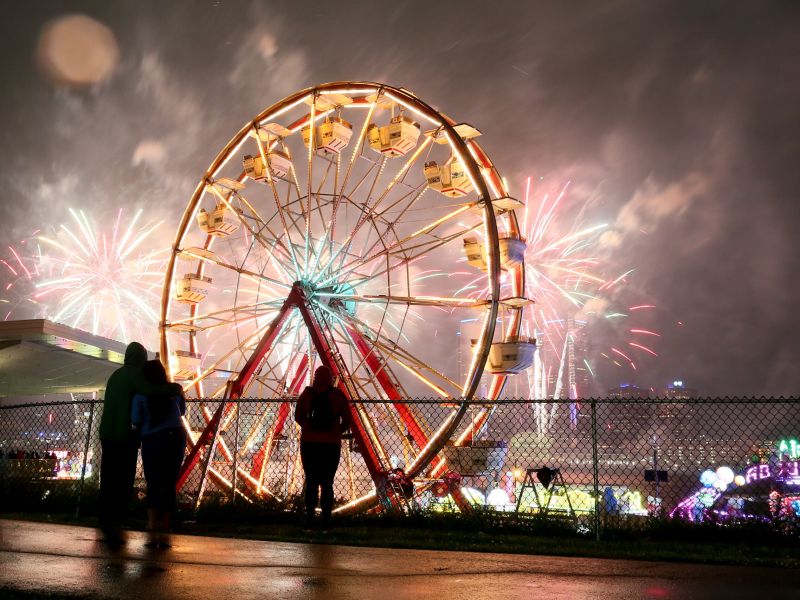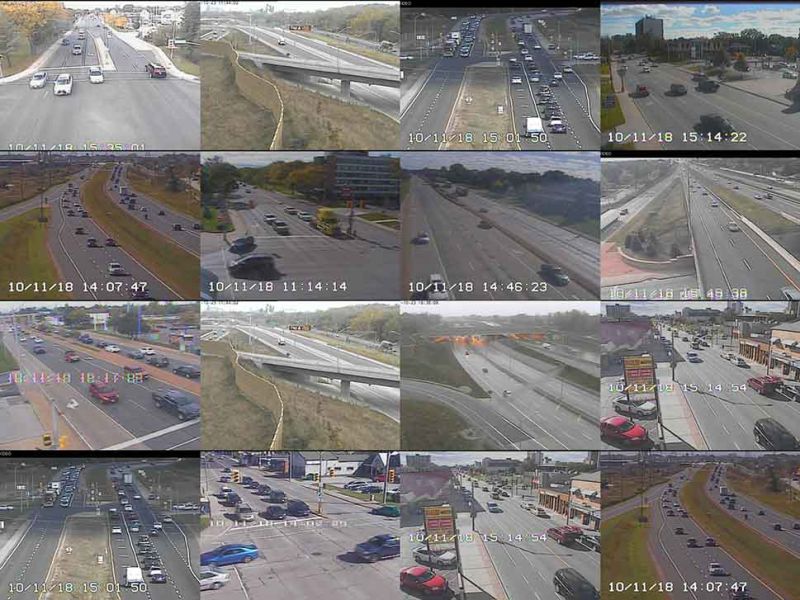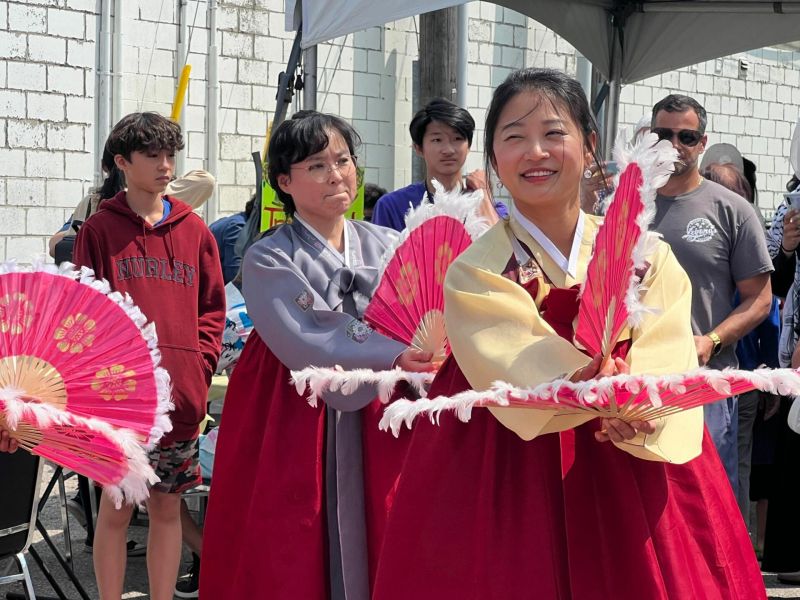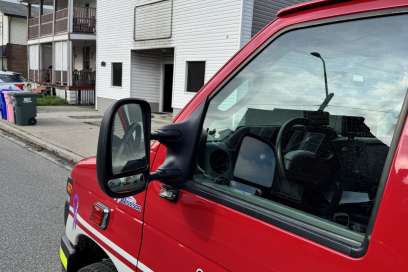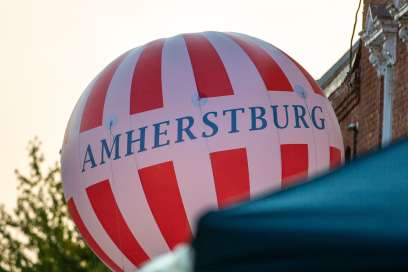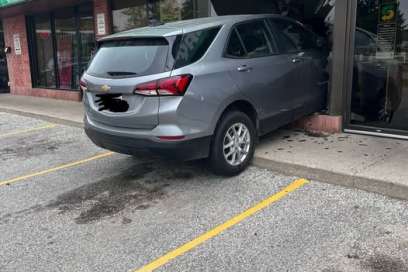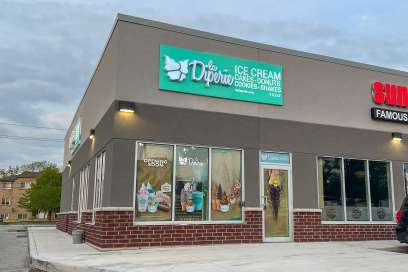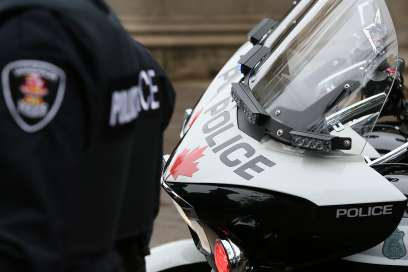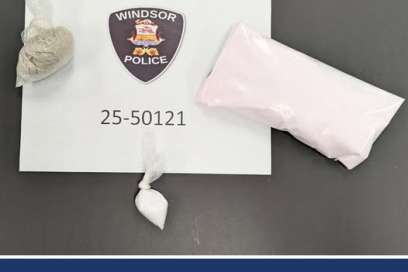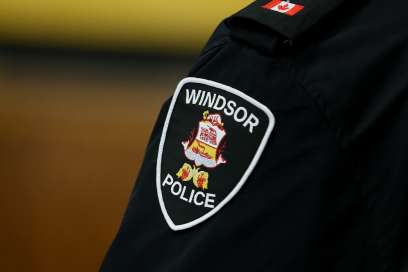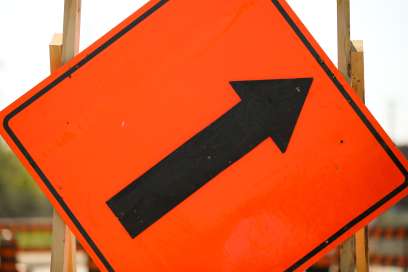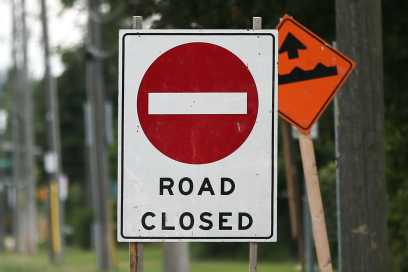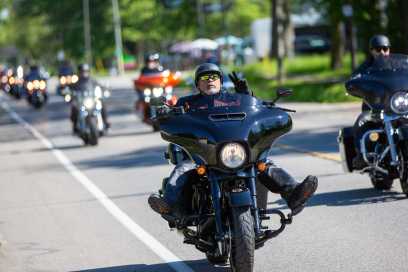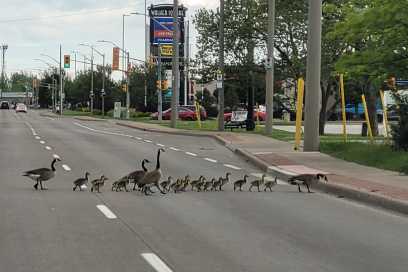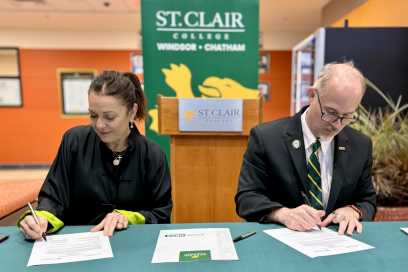PHOTOS: Rescue Workers Train For Earthquake Scenario In Windsor
Wednesday February 25th, 2015, 6:09pm
Hello time traveller!!
This article is 3747 days old.
The information listed below is likely outdated and has been preserved for archival purposes.

Mayor Drew Dilkens speaks in front of a simulated car accident where a piece of structural steel has fallen into a car.
There’s been an earthquake. Up to 800 people are trapped in a building. Special expertise is needed to rescue those trapped. Fortunately, it’s just a simulation — but it could happen — and the people from across Ontario who come to the rescue are training right here in Windsor.
Since the collapse of the Algo Centre Mall in Elliot Lake, Ontario in 2012, the province has been taking steps to train first responders for large-scale emergencies and structural collapses. That training involves a carefully-planned and executed disaster simulation at the former GM Transmission Plant on Walker Road called Operation Border Cities.
The scenario goes something like this: an earthquake has struck Windsor and people are missing and trapped inside a building. Rescue workers including Windsor Police, Windsor firefighters and paramedics are first called to the scene but soon realize specialized help and a history of expertise is needed to save the lives of people trapped deep within the rubble.
A call is made, and the Toronto Heavy Urban Search And Rescue team, or HUSAR, is deployed and arrive in Windsor to perform the role of ‘second responders.’
HUSAR team members, who consist of highly-skilled firefighters, doctors, police and paramedics, among others, locate trapped people using specially trained dogs and electronic search equipment. To locate and safely remove victims, they breach walls, roofs and floors, shore up and stabilize areas of a collapsed building, lift and remove structural components, use heavy equipment to remove debris, provide emergency medical treatment and transfer victims.
All elements of the search and rescue involve a high degree of cooperation between local rescuers and the HUSAR team. Rescuers are even trained to recognize and work in situations involving chemical, biological, radiological and nuclear obstacles.
The drill here in Windsor involves around 100 people such as firefighters, police, paramedics, emergency communications specialists, technicians, and civil servants.
Here’s a tour of what rescuers train for should the worst happen:

The simulation helped to train Windsor firefighters and EMS personnel for a car accident involving greater risk.

The red car originally had a roof, which was cut to rescue the driver. First responders make great use of wood to prop things up, including cars, and parts of buildings that have collapsed.

In this simulation, a large piece of structural steel fell from a building and came to a rest in the passenger seat of a car.

In addition to the simulated car accident, rescue workers were trained to respond to a building collapse where upwards of 800 people could be trapped.

The simulation required responders to create a safe entrance into the collapsed building. In this case, rescuers cut through a wall of cinder blocks and reinforced the entrance with lumber.

The exercise required careful planning and an accurate simulation of rubble to provide realism for training purposes.

Organizers trucked some pieces of rubble in from Toronto and also used items in the former GM Transmission Plant.

Rescuers simulated entrance to a room through a large pipe or culvert. The simulation involved assessing the situation before rescuing people trapped in the room.

Emergency specialist and firefighter Chris Rowland explains how “second responders” from Toronto HUSAR perform a rescue. Rowland said rescue attempts in a situation like a collapsed building require responders to be slow, under control and calculating by reinforcing walls and ceilings to prevent further collapse before reaching victims. Rowland’s past rescue experience includes almost three decades in the Toronto Fire department and special rescue operations during the 2012 mall collapse in Elliot lake where two people died.

Rescuers use simple methods to communicate with victims such as asking them to tap once or twice depending on their injuries.

In this room, the simulated rescue involved a person trapped under a 2500 pound section of concrete. Rowland described the need for emergency personnel to slowly remove a person from a situation such as this in order to prevent shock and further injury or death.

The simulation required a fine degree of details — even items that could potentially fall and injure rescuers.

Rescuers here trained for a serious medical situation where amputation was required using tools that were not intended for such a purpose.

A HUSAR team member discusses using two different methods of making a collapsed building safe to conduct a rescue: with metal supports, or wood.

Wood supports take longer to construct, but these rescuers prefer wood to metal because wood will crack and produce audible warnings that further collapse is taking place.

Rescuers were trained to put supports in place on a stairwell. They say supports such as this provide a safe passage for the removal of victims.

The orange lettering looks like graffiti, but rescuers say it’s actually a system of communication used to describe the conditions inside a collapse zone, and pass the message along to other rescue workers.

In certain situations, hydraulic supports are first used to prop up an area of collapse while rescue workers build more elaborate supports out of wood.
Organizers say the three-day operation is successfully testing the capabilities of all agencies involved. It wraps up Thursday followed by a day of cleanup on Friday.
